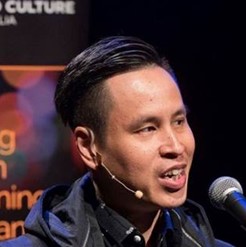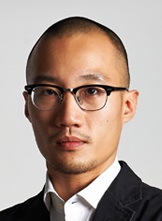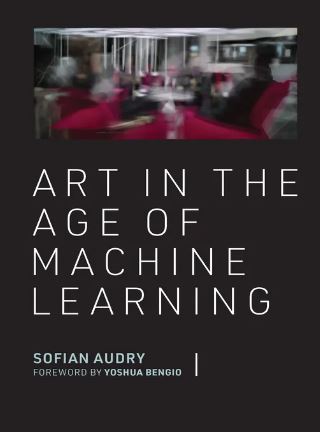AI x Arts
Four Conversations is an annual signature programme by the National Library where thought leaders share new possibilities for the future, while inspiring lifelong learning and the creation of new knowledge.
This resource guide has been produced to complement the conversation on AI x Arts.
The speakers for this session are:
 Marnie Benney
Marnie BenneyCo-founder and Curator
AIArtists.org
 Kevin Lim
Kevin LimDeputy Director, Digital Innovation & Transformation
National Gallery (Singapore)
 Moderated by:
Moderated by:Ken Tan
Senior Director, Programming and Producing
Arts House Limited
There are two general ways in which AI can be involved in the arts: art creation, and art curation. Both involve similar AI concepts and technical backbones, but produce very different results due to their applications.
Art creation tends to be the more sensational application. In October 2018, the Portrait of Edmond Belamy was sold at US$432,500, many times its high estimated price US$10,000. This was a portrait generated by feeding an algorithm a dataset of 15,000 14th to 20th century portraits. The producers of the algorithm went on to produce several other portraits, generating a fictitious “Belamy family tree”.1 The big question is: Can we call this art? Why or why not?
The price tag of the Portrait of Edmond Belamy certainly shows that AI-generated art is not without perceived value. There are other questions to be unpacked, such as the identity of the artist (is it the AI or the person who coded it?), whether artist intention is even meaningful in this instance, or whether AI art should be (or can be) distinguished from human art. There are also scientists and artists exploring the field of “computational creativity”, where AIs generate art with minimal introduction of training datasets.2 This field of AI expands beyond portraiture and visual art, and can be applied to other genres such as music and even literature.
Art curation on the other hand, is more grounded in existing art, and AI serves as a useful tool to manage, curate and exhibit art – largely by producing insights into existing artworks or collections through pattern recognition, machine learning and data analysis. Art institutions hold vast collections of artworks, but it might be difficult to fully explore it without the help of digital technology (the alternative is to look through each item one by one). AI can help to identify common features in a vast collection, to categorise related artworks, or to ‘tag’ many artworks with useful terms3, assisting research, exploration and discovery, thereby opening up the artworks to a wider audience. In terms of applications, research is ongoing to see if AI can help to detect forgeries and fakes, helping art institutions avoid loss of funds and reputation.4
Artificial intelligence still has a long way to go, but its applications in the arts is already underway. Our current concern is how best to apply this new technology in a way that can benefit artists, curators, art historians, and the broader community.
This guide provides supplementary resources for those who are keen to further explore this topic. You can also visit https://search.nlb.gov.sg/ to search for more resources. If you would like to view other resource guides created by our librarians, please visit Reference@NLB.
This resource guide was prepared in September 2022 by Kevin Seet, a Librarian at the National Library, Singapore.
E-Books
Retrieved from OverDrive. (myLibrary ID is required to access the eBook)
| Title | Description |
|---|---|
 |
Art in the age of machine learning Audry, Sofian. (2021). Art in the age of machine learning. MIT Press. |
 |
The artist in the machine: The world of AI powered creativity Miller, Arthur I. (2019). The artist in the machine: The world of AI powered creativity. Cambridge, Massachusetts : The MIT Press |
Websites
When AI Makes Art, Humans Supply the Creative Spark
Will Knight, “When AI Makes Art, Humans Supply the Creative Spark,” Wired, July 13, 2022, https://www.wired.com/story/when-ai-makes-art/
What Happens When Machines Learn to Write Poetry
Rockmore, Dan. “What Happens When Machines Learn to Write Poetry.” The New Yorker, January 7, 2020. https://www.newyorker.com/culture/annals-of-inquiry/the-mechanical-muse
Videos
The AI that creates any picture you want, explained
“The AI that creates any picture you want, explained.” Vox, June 1, 2022, https://youtu.be/SVcsDDABEkM
How AI is transforming the creative industries
How AI is transforming the creative industries. The Economist, April 7, 2021, https://youtu.be/cgYpMYMhzXI
All Rights Reserved. National Library Board Singapore 2022.
-
“Is Artificial Intelligence Set to Become Art’s next Medium?” Christies, (December 12, 2018). https://www.christies.com/features/A-collaboration-between-two-artists-one-human-one-a-machine-9332-1.aspx ↩
-
Ramón López de Mántaras. “Artificial Intelligence and the Arts: Toward Computational Creativity.” OpenMind, (2022). https://www.bbvaopenmind.com/en/articles/artificial-intelligence-and-the-arts-toward-computational-creativity/ ↩
-
“AI & Arts,” The Alan Turing Institute, (2022), https://www.turing.ac.uk/research/interest-groups/ai-arts ↩
-
Steven J. Frank, “This AI Can Spot an Art Forgery,” IEEE Spectrum, (August 24, 2021), https://spectrum.ieee.org/this-ai-can-spot-an-art-forgery ↩

